The flag of the Plurinational State of Bolivia is a tricolor. It contains a color scheme that makes it easy to misindentify as an African flag. To put it simply, the flag consists of three horizontal bars in the order of red, yellow, and green. To prevent any misunderstanding, look closely at the coat of arms in the center.
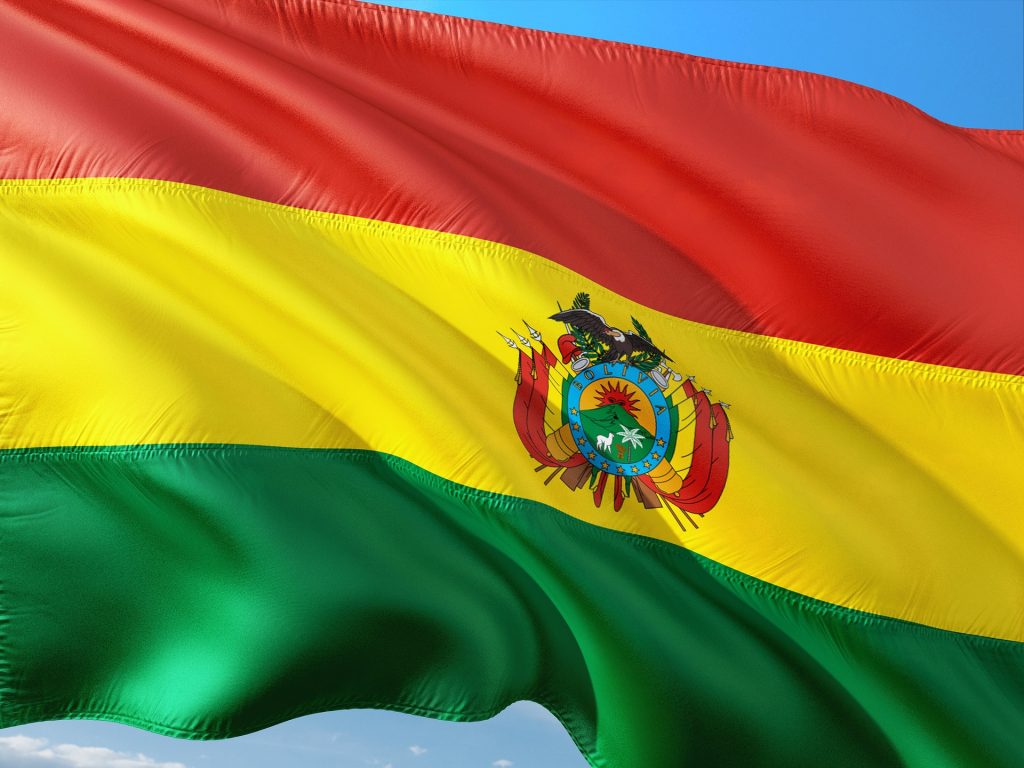
Coat of Arms and Colors of Bolivia
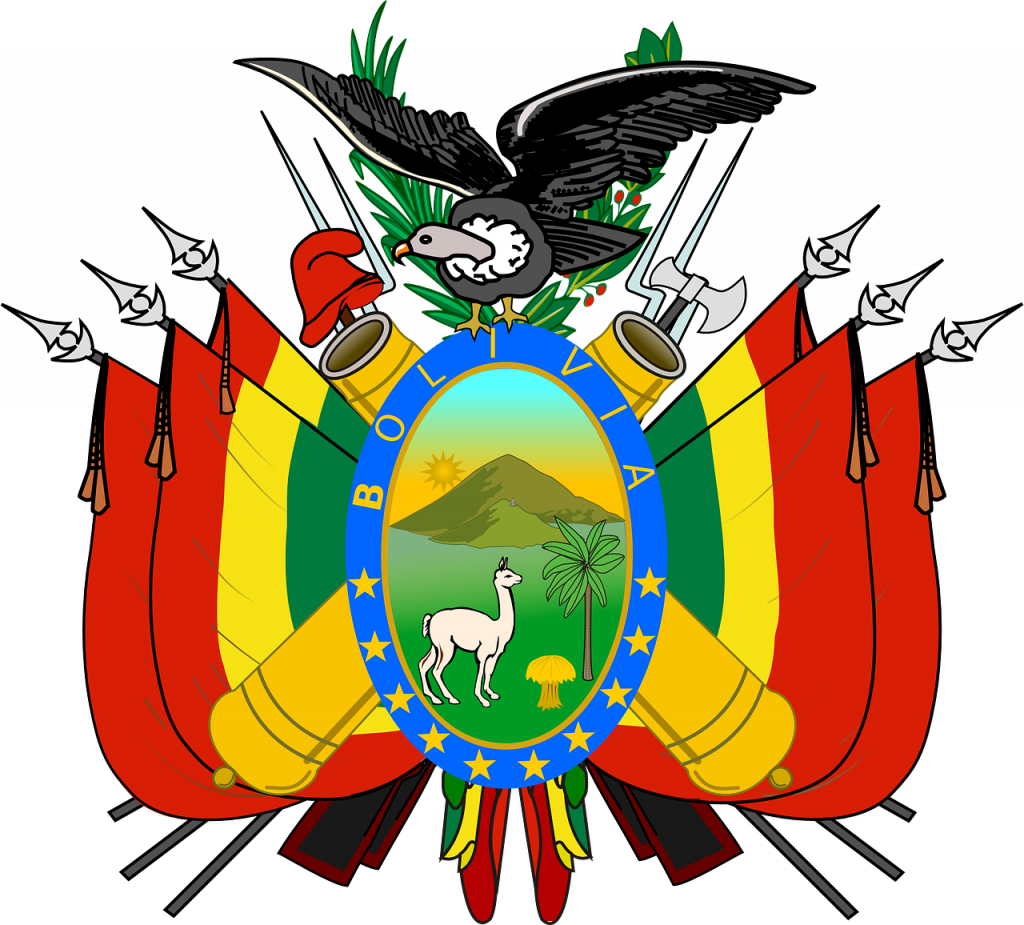
Adopted in 1851, The first description of Bolivia’s national flag was established by the Supreme Decree of 1888 during the presidency of Gregorio Pacheco, which addresses a color description as the following:
Red stands for the brave soldiers of Bolivia.
Yellow stands for the rich mineral resources of Bolivia.
Green represents fertility of the soil.
It is one of eight national flags that depicts its flag within the flag itself. The other seven nations being El Salvador, Venezuela, Costa Rica, Dominican Republic, Haiti, and Ecuador. It is also one of four national flags to consist of a firearm, the others being Mozambique, Haiti, and Guatemala. As we examine the coat of arms, it contains a llama, wheat, hills, and a palm tree; all are natural characteristics of the country.
According to a Supreme Decree recorded in 19 July 2004, during the presidency of Carlos Mesa, it was established that the civil flag be used in civic, public and patriotic celebrations. In other words it will be used without the National Shield. The flag with the shield would be only used for official state functions.
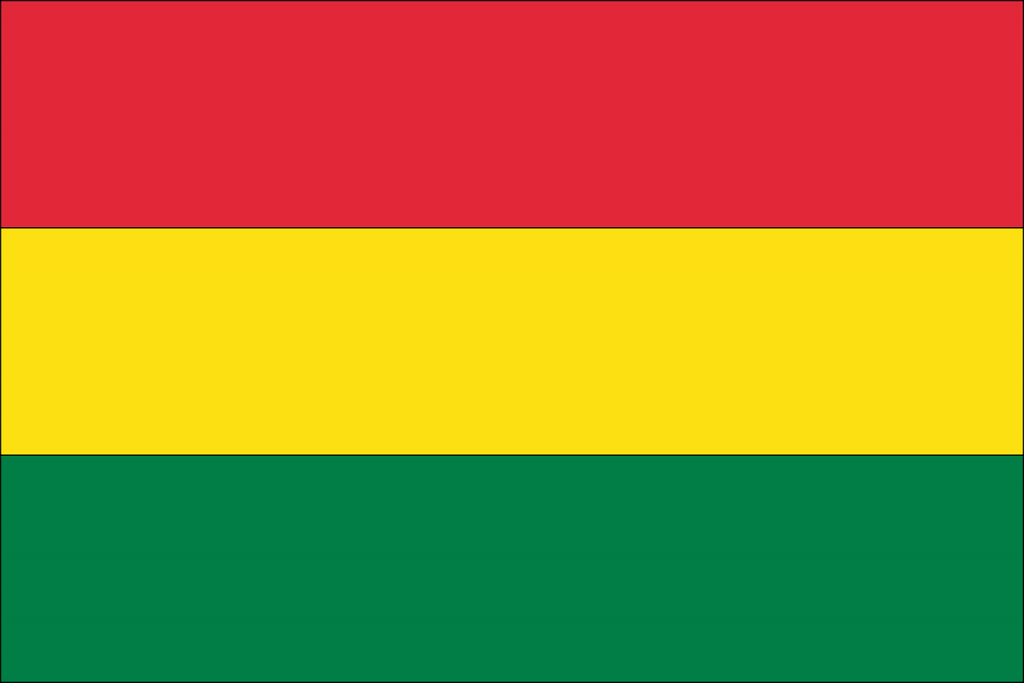
Two Flags?
Did you know that Bolivia has two official national flags? The secondary flag is called the Wiphala, which is of Incan traditional roots. The Wiphala is a square emblem resembling a quilt to represent the indigenous peoples of the Andes mountain range. The flag is designed in a 7×7 diagonal patchwork consisting of 7 colors. The central diagonal 7 squares change in color depending on which traditional provincial region of the Incan Empire the flag represents. The word for these Incan provinces is “Suyu”. The colors coincide with one of four of these traditional provinces.
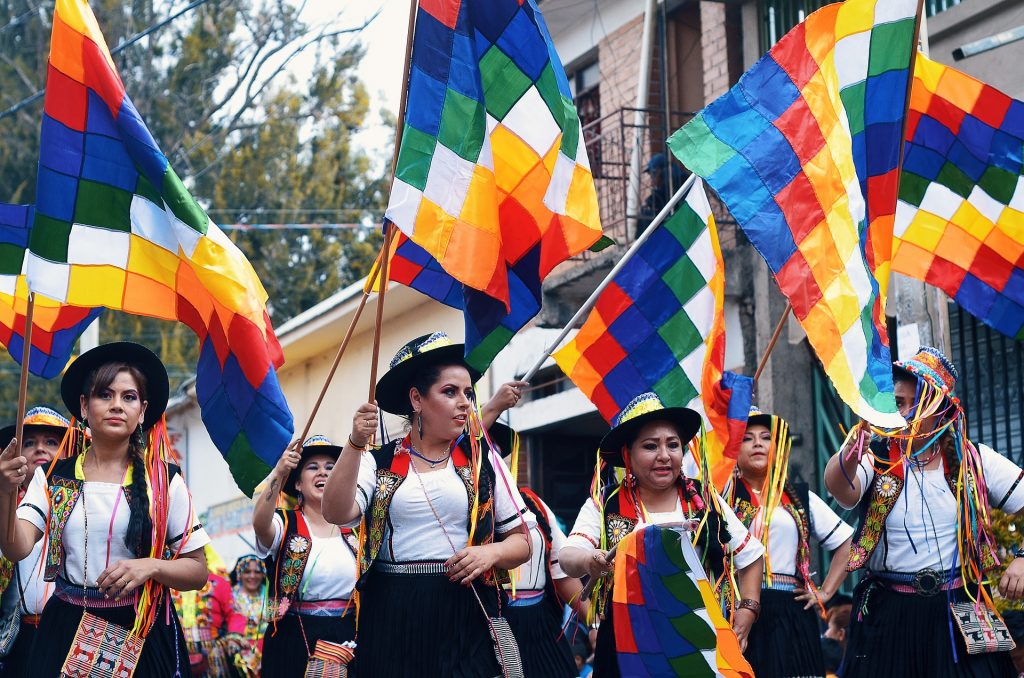
White: Qullasuyu, the southeastern province of the Inca Empire
Yellow: Kuntisuyu, the southwestern province of the Inca Empire
Red: Chinchasuyu, the northwestern province of the Inca Empire
Green: Antisuyu, the eastern part of the Inca Empire
The Wiphala is also officially flown on governmental buildings such as the Palacio Quemado and parliament alongside the tricolor since the constitution was revised in 2009.
The Whipala has also been incorporated into the Bolivian Naval ensign as seen below. Notice how the tricolor and Wiphala are located in the upper left canton area. Naval ensigns are flown at the stern (rear) of a ship to designate the national origin of the vessel.
![[flag]](https://www.crwflags.com/fotw/images/b/bo~.gif)
As an additional note, just in case you’re around Bolivian aircraft, below is the roundel that aircraft of Bolivian origin use to identify themselves. These square roundels are located on the wings, fuselage, and tail of the aircraft.
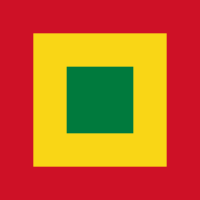
Don’t forget to take note of our YPT tours of the Americas if you have an interest in remote and unique destinations in Latin America!





